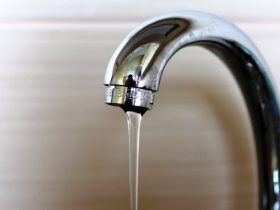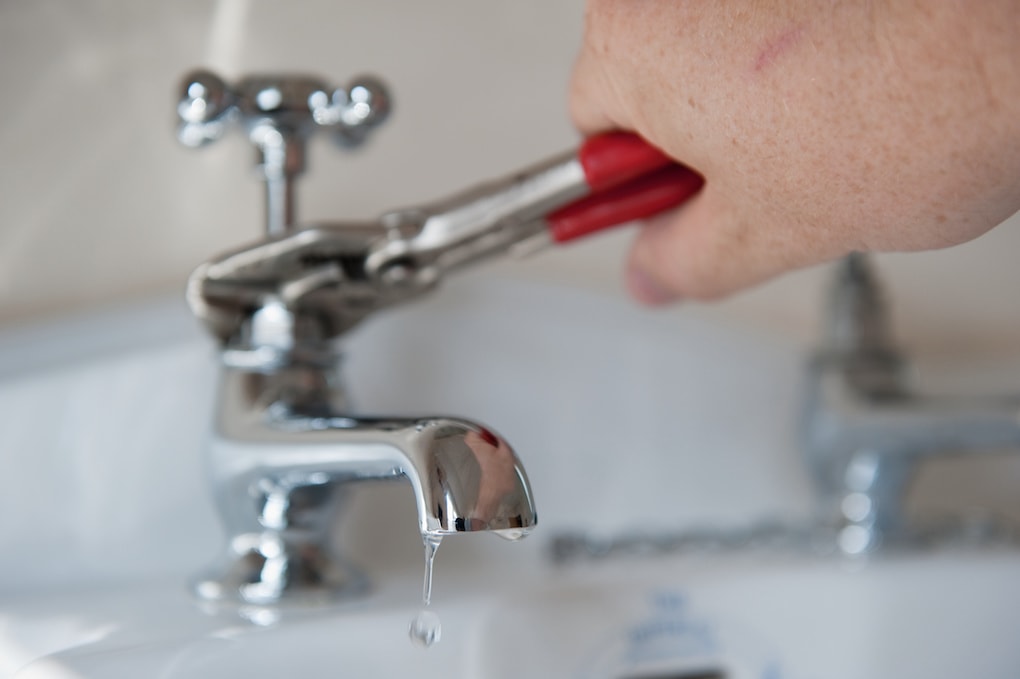Trusted Approaches for Fixing Low Water Pressure in Your Home
Trusted Approaches for Fixing Low Water Pressure in Your Home
Blog Article
Have you been in search of facts around 9 Reasons for Low Water Pressure in Your House?

Low tide pressure in your house can be a frustrating problem, impacting whatever from showering to washing dishes. If you're experiencing weak water circulation, there are a number of feasible reasons and options to check out. In this guide, we'll talk about common factors for low water stress and functional actions to resolve the problem efficiently.
Intro to Low Water Pressure
Low tide stress happens when the circulation of water from your taps, showers, and other fixtures is weak than normal. This can make everyday jobs extra challenging and much less effective. Comprehending the causes of low water stress is critical to finding the appropriate remedy.
Usual Causes of Low Water Stress
Pipeline Obstructions
Gradually, pipelines can come to be obstructed with mineral deposits, sediment, or debris, restricting the flow of water. This is a typical problem in older homes with galvanized steel pipes.
Deterioration
Deterioration within pipelines can lead to leaks and decreased water stress. Corrosion buildup can restrict water circulation, particularly in maturing plumbing systems.
Faulty Pressure Regulators
Pressure regulatory authorities are in charge of keeping constant water stress in your home. If they malfunction, it can result in low tide pressure or uneven circulation throughout your house.
Municipal Water Supply Issues
Sometimes, the trouble lies outside your home. Local water supply issues, such as main line leakages or upkeep job, can momentarily reduce water stress in your area.
Exactly How to Detect Low Tide Stress
Examining Taps and Components
Begin by examining the water stress at different faucets and fixtures throughout your home. If the problem is separated to certain areas, it may show localized problems.
Checking Pipelines
Inspect noticeable pipelines for indicators of leaks, deterioration, or blockages. Take note of any kind of unusual audios, such as banging or rattling pipes, which can suggest problems within the plumbing system.
Consulting with a Plumber
If you're unable to pinpoint the cause of low tide pressure, think about working with an expert plumber to conduct a complete examination. They can recognize underlying problems and suggest appropriate services.
Do It Yourself Solutions to Fix Low Water Pressure
Cleansing Aerators and Showerheads
Mineral deposits can build up in aerators and showerheads, decreasing water flow. Get rid of and clean these elements regularly to enhance water pressure.
Flushing Hot Water Heater
Sediment buildup in the water heater can limit flow and decrease efficiency. Flushing the storage tank occasionally aids remove debris and preserve ideal performance.
Checking Pressure Regulator
Make certain that the pressure regulatory authority is working appropriately. Readjusting or replacing the regulatory authority can help recover appropriate water stress throughout your home.
Clearing Clogs in Piping
For minor obstructions, attempt using a plumbing snake or chemical drainpipe cleaner to clear obstructions in pipelines. Beware when utilizing chemicals and follow safety and security guidelines.
When to Call an Expert Plumber
If DIY initiatives fail to solve the problem or if you believe significant plumbing troubles, it's ideal to look for help from a licensed plumber. They have the know-how and tools to resolve intricate concerns securely and efficiently.
Preventive Measures to Preserve Water Pressure
Routine Upkeep
Schedule routine maintenance for your plumbing system to avoid issues such as corrosion, leakages, and clogs. Attending to minor problems early can assist stay clear of even more substantial repair work later on.
Mounting a Stress Booster
Consider mounting a stress booster pump to enhance water pressure in locations with constantly low flow. This can be particularly beneficial for multi-story homes or residential properties with high-demand components.
Surveillance Water Usage
Bear in mind water use routines and avoid overtaxing the plumbing system. Basic adjustments, such as incredible showers and laundry tons, can assist preserve appropriate water stress.
Conclusion
Handling low water pressure can be discouraging, however identifying the underlying reasons and carrying out proper solutions can recover optimum circulation throughout your home. Whether it's cleaning up aerators, evaluating pipes, or consulting with a plumber, taking aggressive steps can make certain a stable supply of water for your daily needs.
FOUR WAYS TO FIX LOW WATER PRESSURE NOW
Turning on a shower or faucet only to find the water comes out in a sad, slow drizzle is never a good feeling. How exactly are you supposed to wash a pan or take a quick shower when it takes 10 minutes just to rinse off a little soap? The good news is that when your water pressure is bad, there's always a cause: typically one that can be easily fixed. Here are some of the most common causes of low pressure and what you can do to fix the issue:
DEBRIS AND MINERAL DEPOSIT BUILDUPS
If you notice low water pressure from just one or two of the fixtures in your house, the problem likely has to do with debris buildup. Water is full of minerals and other debris, all of which can accumulate in your pipes and on your fixtures. This can cause a blockage that affects how much water flows through. To fix this, try filling a small plastic bag with white vinegar, and use a rubber band to hang it around your showerhead or faucet. Let the head of the fixture soak for a few hours, and the vinegar should loosen the deposits.
WATER LEAKS
Leaks are another common cause of low water pressure. If water is flowing out of your plumbing through a hole or crack before it can reach your fixture, the pressure coming out of the faucet or showerhead will be lower. A plumbing professional is your best bet for finding and repairing a leak in your water supply pipes.
Leaks are another common cause of low water pressure. If water is flowing out of your plumbing through a hole or crack before it can reach your fixture, the pressure coming out of the faucet or showerhead will be lower. A plumbing professional is your best bet for finding and repairing a leak in your water supply pipes.
FOUR WAYS TO FIX LOW WATER PRESSURE NOW
Turning on a shower or faucet only to find the water comes out in a sad, slow drizzle is never a good feeling. How exactly are you supposed to wash a pan or take a quick shower when it takes 10 minutes just to rinse off a little soap? The good news is that when your water pressure is bad, there's always a cause: typically one that can be easily fixed. Here are some of the most common causes of low pressure and what you can do to fix the issue:
DEBRIS AND MINERAL DEPOSIT BUILDUPS
If you notice low water pressure from just one or two of the fixtures in your house, the problem likely has to do with debris buildup. Water is full of minerals and other debris, all of which can accumulate in your pipes and on your fixtures. This can cause a blockage that affects how much water flows through. To fix this, try filling a small plastic bag with white vinegar, and use a rubber band to hang it around your showerhead or faucet. Let the head of the fixture soak for a few hours, and the vinegar should loosen the deposits.
WATER LEAKS
Leaks are another common cause of low water pressure. If water is flowing out of your plumbing through a hole or crack before it can reach your fixture, the pressure coming out of the faucet or showerhead will be lower. A plumbing professional is your best bet for finding and repairing a leak in your water supply pipes.
Leaks are another common cause of low water pressure. If water is flowing out of your plumbing through a hole or crack before it can reach your fixture, the pressure coming out of the faucet or showerhead will be lower. A plumbing professional is your best bet for finding and repairing a leak in your water supply pipes.
A VALVE ISSUE
If you have low water pressure throughout your home, check your main shut-off valve to make sure it's completely open. You may also want to see if there's a pressure-reducing valve installed. If there is, have a plumber help you adjust the settings to get the pressure you're looking for.
OTHERS USING WATER
Believe it or not, your low water pressure could be caused by your neighbors. If you notice low pressure at certain times of day, it may be because you and the people living next to you have similar schedules - when everyone is showering at the same time, the pressure will be lower in every home. Low pressure throughout the neighborhood may also be caused by an issue with your municipal water supply. If that's the case, call the supplier to see if they're working on the issue.
https://www.rotorooter.com/blog/water-leaking/low-water-pressure-fixes/

We hope you enjoyed reading our section on Low Water Pressure in the House?. Thanks a ton for taking time to read through our blog post. Sharing is good. You won't know, you may just be helping someone out. Kudos for being here. Please visit our site back soon.
Click Here Report this page